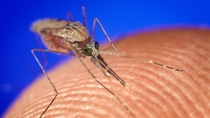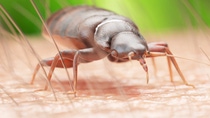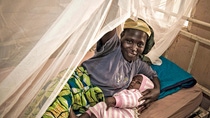Agriculture
Mosquitoes and bed bugs – unfortunate bedfellows in the fight against malaria
We have made much progress over the past two decades in tackling malaria. But another pest that has made its home close to humans – the bed bug – is complicating efforts. We look at how the two issues are connected and ask whether nets that use an insecticide that is effective on both mosquitoes and bed bugs, like BASF’s Interceptor® G2, could be part of the solution.
One of the most effective ways of preventing malaria is sleeping under an insecticide treated net (ITN). Since 2000, ITNs have helped more than halve the number of malaria deaths from 736,000 in 2000 to 409,000 in 2019, according to the World Health Organization’s 2020 World Malaria Report. But ITNs are only effective if they are used – and used properly. One problem deterring people from using ITNs is the appearance of bed bugs. Evidence shows that people in some malaria endemic regions believe that ITNs attract bed bugs and are therefore refraining from using the nets or even destroying them. In fact, ITNs do not attract bed bugs – the bed bugs are already present. They cannot fly, but are excellent hitchhikers, often attaching themselves to clothing, bags or bedding, or to pets and livestock. In this way, they move from one home to the next. Tackling this problem requires educational work at the community level, but it could also be helped by new types of nets that contain different insecticides that are proven to reduce or eliminate bed bugs.


Issues that affect ITN acceptance
There are many reasons why people do, or do not, use ITNs. A key driver is understanding that nets are effective at preventing malaria. But aside from that, like any product, there is also an element of user experience. Various characteristics of the nets can make a difference – their color, shape and smell as well as the feel of the material. If the experience is uncomfortable, they are less likely to be used.
One inhibitor that has emerged over the years is the association between the use of ITNs and the appearance of bed bugs. Dr Aimable Mbituyumuremyi, malaria program manager at the Rwanda Biomedical Centre, says that this has been a significant problem in his region. “In documented discussions with local communities, people say that ITNs produce bed bugs,” he says. “People see bed bugs coming out and ask how nets are producing them.”
The problem is not new. A 2015 study by Dr Chantal Ingabire, a medical anthropologist working in Rwanda, and colleagues found that bed bugs are one of the factors that impede the acceptability and use of ITNs. The problem has also been identified in Malawi, Ethiopia and other countries.
Why do bed bugs appear?
The bed bug is an insect that, like the mosquito, feeds off humans and makes its home in our homes. They are a problem worldwide and, although they do not transmit disease, their bite can be unpleasant, leaving itchy bumps. It can be alarming if you or your child suffers hundreds of bites. “Bed bug infestations are disturbing, and they are very hard to get rid of once they have infested a household or community,” says Dr Ingabire.
Bed bugs are also experts at hiding – their slim flat bodies allow them to fit into the smallest of spaces such as seams of mattresses, joints of bedframes or nearby tables, and cracks in adjacent walls. That is one reason why a bed bug infestation is often only recognized when the bugs begin to bite or they leave their sign in the form of fecal spotting on bedsheets.
“Bed bugs have been with us since we lived in caves. They are attracted to warm-blooded animals and complete their entire life cycle closest to their food source, which includes humans and any nearby animals,” says Dr James Austin, BASF’s chief public health entomologist. “They are very difficult to control. But to be clear, bed bugs are not attracted to ITNs – it is the humans under the nets they are after, their warmth and the chemicals like carbon dioxide they exhale. Also, unlike mosquitoes, bed bugs can endure long periods without a blood meal, which means they can be waiting for you for several months.”
A problem of resistance
An effective way to prevent bed bugs is by regularly inspecting beds and bedding for signs of infestation and carrying out regular cleaning and good hygiene. If an infestation nevertheless occurs, bed bugs can be controlled through the use of insecticides. One reason for the rise in concerns about bed bugs could be that bed bugs, like mosquitoes, are developing resistance to conventionally used pyrethroid insecticides used in ITNs.
The problem of insecticide resistant mosquitoes is now widely recognized and tracked. According to the 2020 World Malaria Report, 73 countries reported mosquito resistance to at least one of the four commonly used insecticide classes in the period 2010-2019. In response to this rise in resistance, efforts are underway to develop new tools to tackle malaria. One of these is BASF’s Interceptor® G2 ITN. It is treated with two insecticides – alpha-cypermethrin and chlorfenapyr. Chlorfenapyr is the first completely new insecticide class in more than 30 years for malaria control targeting adult mosquitoes. It is effective against mosquitoes that have developed resistance to insecticides that are used in most conventional ITNs.

Rwanda is one of the countries that has documented insecticide resistance among mosquito populations. This is one reason why it is trialing new types of ITNs, including Interceptor® G2, which have been distributed across the country since June 2020. The trials are ongoing to determine the epidemiological impact of the new nets in terms of malaria control, but as chlorfenapyr has proven effective in controlling pyrethroid-resistant bed bugs, there is good reason to believe there will be a positive impact on this issue too. And that could mean that people are more likely to use their nets.
Experience from pest control
Chlorfenapyr has a completely different mode of action to other active ingredients commonly found in ITNs and indoor residual sprays used for malaria control. This is what makes it effective on resistant mosquitoes. What is more, chlorfenapyr is already established as an effective tool in the professional pest management industry in the United States to tackle bed bug infestations.
This is why we think the use of chlorfenapyr in Interceptor® G2 could hold great promise to reduce bed bug occurrences where nets are used to combat malaria.
This hope appears to be borne out by current observations in the field in Rwanda. “Distribution of Interceptor® G2 across the country began in 2020, so the nets are still relatively new, but so far in group and individual discussions there is no issue of bed bugs in the data coming in currently,” says Dr Ingabire.
More evidence, more education
Both the science and current observations suggest that new nets like Interceptor® G2 can help reduce the problem of bed bugs deterring people from using ITNs, and thus complicating the fight against malaria. But empirical data is also needed to demonstrate whether they increase acceptance and usage, as is ongoing education. “We need to make an assessment at community level,” says Dr Aimable. “We also need to deploy local NGOs to educate communities about this and make clear that the way to tackle bed bugs is by cleaning bedding, not removing ITNs.”
ITNs are proven to work in the fight against malaria. While research, development and distribution are essential, in order to be effective, nets must be used by people in their homes on a daily basis.
It is the last mile that counts. We have to be aware of all the issues that affect people’s use of nets. Anything that deters people from using ITNs puts in danger the fight against malaria. We must examine all the causes and gather evidence for tools that work.




